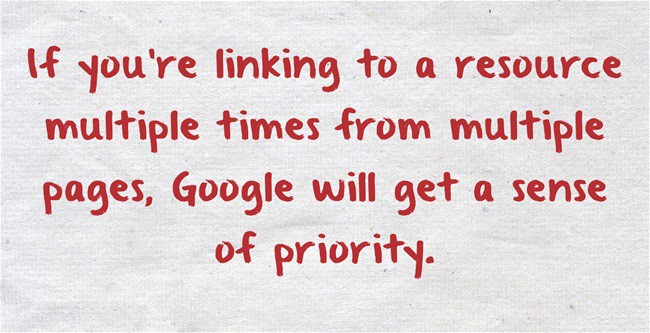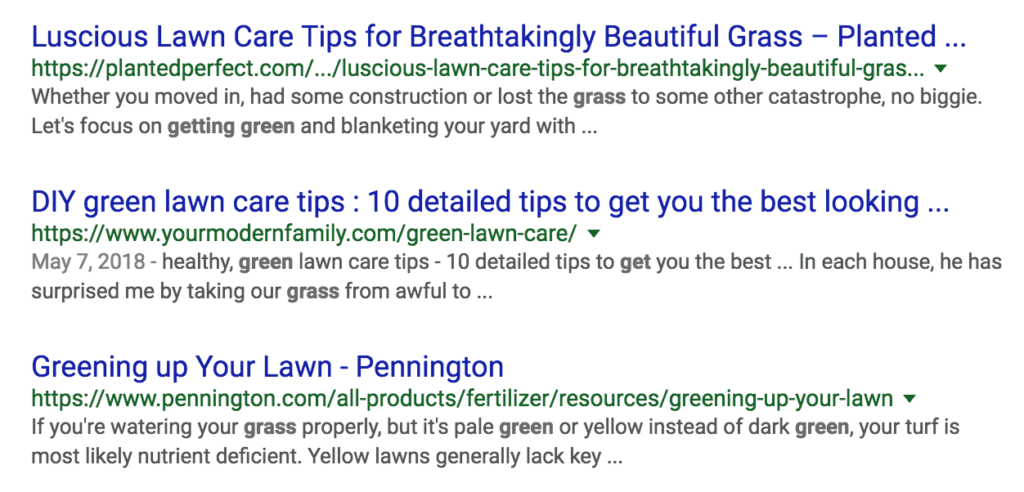
Marketing | Strategy | 05.18.2018
4 Tips for Making Your Website SEO Friendly
Looking to make your website more SEO friendly? Search engine optimization takes time and is best done incrementally. To get the best result, I suggest you put on your “always-be-improving” hat.
Without further ado, here are 4 tips that everyday businesses should consider in regards to SEO optimization and friendliness. Without a doubt, this list isn’t exhaustive; but nevertheless, it’s a good start for most companies.
Tip #1: Quality Content is SEO Friendly
More and more, Google has figured out the difference between fluff content and good, written-for-humans-and-not-search-engines content. My first tip for search optimization is to write valuable content that your users will find helpful. Good content gets shared more often and leads to lower bounce rates and higher time on your website. Here are some specifics on writing good content.

Passion
Here’s a huge point. It’s really hard to write content for something that you aren’t passionate about. When writing content for your business or organization, think deeply in regards to what you bring to the world and what makes you unique- what you are passionate about. I used to think that I hated writing. Turns out, I hated writing general content that I wasn’t excited about. Give me an exciting topic and the content just flows.
Relevance
So what makes your product or service different? For our company, we specialize both in WordPress web design and certain verticals like construction, real estate, consulting and manufacturing. Part of what makes content “quality content” is that it’s useful. Well, if you don’t know who your market is and you’re writing to everyone, it’s very likely that few folks will find value or use in what you’re writing.
There’s a big difference between these two article titles:
How to build a successful website
5 qualities of a top-notch construction website
The first article topic makes me nauseous as a blogger.
How am I going to write on such a broad topic and make the content useful? On the other hand, when it comes to construction website design, I can talk about having a clear service offering. I can talk about the importance of a quality case studies that will appeal to prospective construction clients. I can talk about how executive profiles can really make a company relatable and personal.
Digestion
In general, longer content (1000 words or more) tends to be more SEO friendly. Longer content includes more for your visitors to engage with and consequently more keywords that Google can index. A shorter page or post, say 300-400 words, just can’t get into the weeds as much as a more lengthy article can. Here’s a helpful article on content length.
More then just word count though, it’s important that you’re content is digestible.
Is reading your content exhausting? Keep it digestible by breaking the text up, adding imagery and using text formatting to call out certain points. Use shorter paragraphs.
Remember, we’re on the Internet here. People have super short attention spans.
Tip #2: Make Your Website Mobile-Friendly
When companies think about a mobile-friendly website, most often think in terms of user experience. But did you know that having a mobile-friendly website is also uber important if you want to be SEO friendly? In the past few years, Google has made this feature much more of a factor in its overall ranking algorithm.
So why does Google care? Well, simply put, Google understands that the experience of a non-responsive website on a phone is stinky. Yes, I said stinky.
Isn’t this your experience? How do you feel when you have to pinch and zoom in order to use a contact form on a website? Or to view a company’s services? Google understands that users want accessibility. They need to be able to use the web on their phone or tablet and Google will reward companies who make the jump.
Don’t have a mobile-friendly site? Here’s a helpful article I wrote for further reading. Interested in learning what it would cost to make your website responsive? Reach out and we’d love to see if we can help.
Tip #3: Internal Links are SEO Friendly
One of the simplest techniques to make your website SEO friendly is to link to all of your other valuable, internal content. Did you notice how I did that twice on tip #2?
Linking to internal content allows Google to understand your site structure and also the value of each individual page. If you’re linking to a resource multiple times from multiple pages, Google will get a sense of priority.

Additionally, among many other benefits, internal linking will allow your readers to find other helpful topics on your website. For instance, I wrote another article recently called “Why You Should Pay More than $5 for Website Hosting“. When I link to this page, like I just did, I send a signal to Google that this page is related and may be helpful to my readers.
Internal linking is a vast topic, but what’s more important is that you’re doing it regularly so that your website is SEO friendly. If you’re writing content about your products or services, link to blog posts that are related or other services that are relevant.
If you’re writing blog content, scatter in other blog posts that are related and include links back to your services pages to build authority to those pages. For instance, we often link back to our web design and web development pages when writing blog content.
Tip #4: Optimize Your Meta Titles & Descriptions
It used to be the case that meta titles and descriptions were important for the actual ranking position in search engines. For the most part, these days, metadata for a page or post has limited ranking value; that said, it does have tremendous click-through value. What do I mean by click-through? Well, look at the screenshot below when I search for “How to get green grass”.

Well, as you can see the title and description are really important.
Which one of these would you pick? Well, for me, I gravitate to the 10 detailed tips post. With the search I made, “How to get green grass” I’m looking for some quick ideas that I can try myself – note the DIY keyword. The last link doesn’t wet my appetite because there’s too much guesswork on whether it will help me or not.
When writing meta titles and descriptions, here are some tips:
- Pique your prospects interest by using action words like “learn more about” or “in this article, you’ll discover“
- Keep your description less than 320 characters as Google will truncate it if it’s any longer
- Make sure the title and description match your actual article so the reader doesn’t feel deceived
- Use numbers when applicable in your titles – “i.e. 5 ways to … ” – titles with numbers tend to have higher clickthrough rates at times.
Conclusion
So there you have it. 4 easy to understand pointers that will help you make your website more SEO friendly: 1) write quality content 2) invest in a mobile-friendly website 3) use internal linking regularly & 4) create relevant and intriguing titles and descriptions. This is surely just the tip of the iceberg for such a vast subject, but putting these tips in action should get you started in the right direction.
But more than anything else, make sure to be cognizant about search engine optimization. A continual investment will help your company find the upward mobility that you’re looking for.
Questions? We’d love to hear from you in the comments section below.
[mc4wp_form id=”12260″]